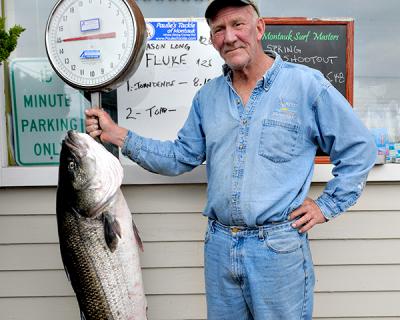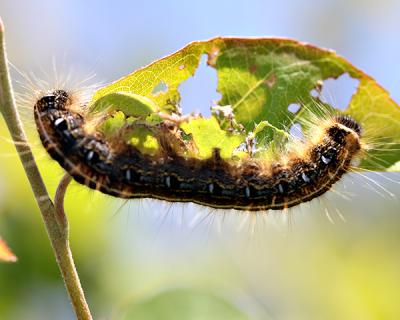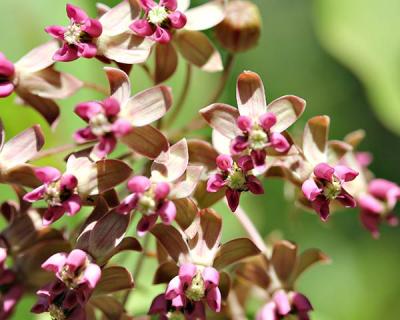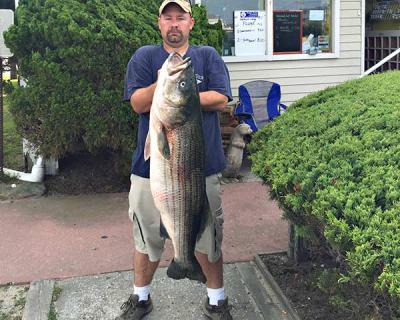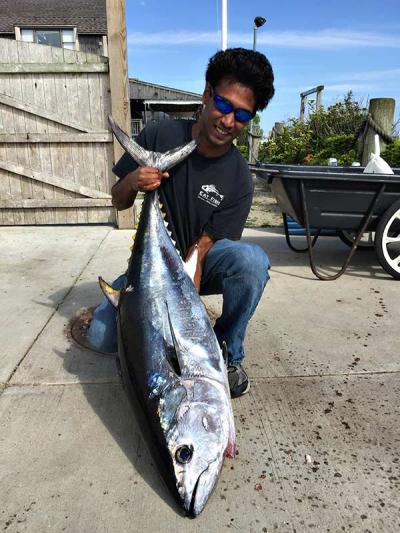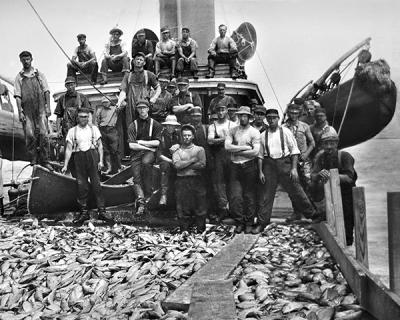Nature Notes: Gypsy Moths 2016
Nature Notes: Gypsy Moths 2016
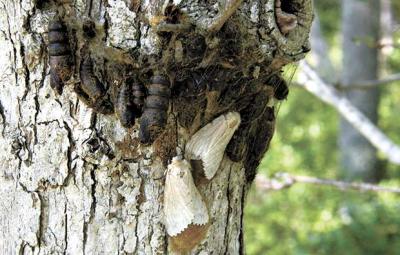
Just about every school kid in the East knows about gypsy moths. If you asked them what one looks like, though, they’d be hard pressed to describe it. What they know more than the moth itself is the two-to-three-inch dark-colored caterpillar covered with hairs that can sting. Depending upon their ages they may have even witnessed the destruction of woodlands and landscape trees by these moths in their neighborhoods.
The last such mass defoliations of deciduous trees around these parts occurred in 2009, 2001, and 2000. Oaks are the favorite of this caterpillar, and the white oak is preferred above the others. In the last infestation, a mature white oak’s 3,000 or 4,000 leaves were stripped to the midrib in a matter of two weeks or less, and when the caterpillars were about to eat themselves out of house and home in one area, say, in the Northwest Woods or the woods of Noyac and Wainscott, what did they do? They crossed roads in droves to get to those areas where trees still had leaves. Ultimately, they ate themselves to death, i.e., they starved or were attacked by a virus that preys on gypsy moth caterpillars before they were able to pupate, and the population collapsed.
The destructive gypsy moth story is not so different from the one of the wooly adelgid, or emerald ash borer, the Asian long-horned beetle, and the Japanese beetle. All of these came from foreign shores, but sometimes the culprit can come from another part of our country. Such is the case with the southern pine borer now wreaking havoc on our pitch pines and the Colorado potato beetle, which had to be killed off with very toxic chemicals like DDT and Temik, or aldicarb. Produced by Union Carbide, those chemicals eventually got into eastern Long Island’s groundwater aquifer and from there into many North Fork and South Fork water supplies. The introduction of harmful insects from other countries continues despite stricter controls on imports.
I’ve been keeping track of gypsy moth infestations here since the mid-1970s. There was a giant one in 1982 that hit the entire East End and Gardiner’s Island, as well. Fortunately, a record-setting June raincame along and washed most of the caterpillars out of the trees and onto the ground and so stressed them out that they died en masse — possibly from the rain and an ever-present natural enemy, the nucleopolyhedrosis virus, or NPV — before all of the hardwoods and some white pines were totally defoliated. That rain so irrigated local woodland areas that most of the injured trees were able to refoliate, which is one recovery strategy of local hardwoods after suffering defoliation.
Then in 1989, hordes of gypsy moth larvae appeared as if out of nowhere and 50 percent of the local woodlands were stripped bare. Many of those trees, especially the white oaks, were lost forever. The infestation was so bad that people in their houses were kept awake at night by the caterpillars’ droppings, or “frass,” from on high. Many decks, roofs, and car tops were completely covered with the stuff after a night of intense feasting. The arborists were kept busy throughout the spring spraying this and that insecticide to try to stem the attack, but in most cases their efforts were futile.
In 1999, arborists got to the caterpillars early and their success rate and widespread efforts paid off for the many homeowners who didn’t want to experience the 1989 losses all over again. The previous epidemic had taught us a lot. The NPV virus also left hundreds of nearly full-grown larvae dead on trunks of trees half hanging in a V-shaped posture.
In all of those gypsy moth eruptions, the parklands and woodland preserves such as the Grace Estate, Hither Woods, and the pine-oak woods of Wainscott and the South Fork’s terminal moraine suffered considerably. In 2001 I counted the rings of many dead white oak trees that the highway departments had to cut down for safety reasons. Several were more than 100 years old, a few as old as 150 years. Apparently, the older the tree the more susceptible it can be.
In the 1960s and early 1970s aerial spraying was used locally and on many parts of Long Island to stanch the spread of gypsy moths. It worked to a certain degree, but the poisons used — DDT, malathion, and the like — also killed off a lot of the birds, mammals, reptiles, and amphibians, the osprey among them.
Those other foreign invaders alluded to above slipped into the country by hook or by crook; they weren’t imported on purpose. The gypsy moth, on the other hand, was brought to a spot in Massachusetts from Eurasia in 1869 as a potential silk manufacturer by E. Leopold Trouvelot, himself an immigrant, as all silk at that time was spun in Asia. A few got loose and you know the rest of the story. It took almost 100 years for them to reach Long Island in outbreak numbers.
Even though my early April search of local woodlands failed to come up with more than a few ecru-colored egg patches on tree trunks, I began to get leery after coming back from an early June native plant workshop in Pennsylvania and seeing lots of defoliation along the Southern State Parkway, especially around Amityville and Huntington. Then, two and a half weeks ago, I was working in the yard and discovered several nearly mature gypsy moth caterpillars under some boards near one of my three very tall oaks. Had I never looked under those boards, I never would have known my trees were about to be hit hard — when I looked up, that particular scarlet oak tree was fully leaved.
A week later I found the black oblong pupae of gypsy moth larvae sequestered in another area. About that time, a lady who lived on the east shores of Three Mile Harbor emailed me that she had a gypsy moth problem and was going to treat. On Saturday while I was driving along Route 114 between Sag Harbor and East Hampton, I began to notice some trees that looked as if they were losing their leaves. (Five weeks earlier I had conducted a photographic study of the undergrowth and canopies of several South Fork woodlands and had found no sign of defoliation.)
On Friday morning a bunch of small brown moths — male gypsy moths — were flying in zigzag patterns around my yard. Uh-oh, I thought! On Sunday my teenage grandson, Matthew, and I went back to the Route 114 spot and parked alongside the defrocked oaks. Male gypsy moths were flying everywhere in the same zigzag pattern. While my grandson photographed through the open car window, I ventured out and inspected the boles and branches of the affected trees. Many black inch-long pupae remained. I looked farther in and finally found a trunk with two freshly laid ecru egg masses about head high with two freshly emerged female gypsy moths, much lighter in color than the males nearby. I found a spent female next to one of the egg masses. She had already lost her wings and was about to give up the ghost.
Oh, yes, the gypsy moth adults are quite ephemeral, in the way that mayflies are. The females don’t fly, but crawl from their opened pupal cases a few feet to the bole of the same tree and begin emitting a pheromone that the males sense. The scent says, “I am ready to mate.” Mating occurs and eggs are laid. Both the males and females live for only a few days. Sad, in a way.
The pinhead-size eggs hatch pre-winter as tiny larvae and overwinter in the fleece fibers deposited by the female. If some of the thousand or so eggs make it through the winter, they leave the nest come early April as the leaves are budding and make their way to the nearest buds. Later as they grow and shed the outer skin as many as seven or eight times, they work on the canopy leaves first. When they are an inch or so in size, they crawl down the trunk each night, hide under the cover of darkness and, come morning, crawl back up and go to work. During the zenith of an epidemic the caterpillars stay up in the trees and eat and eat and eat all day and all night.
Not all the caterpillars keep to the home trees when they are minute larvae just a few millimeters long. Many spin very fine silk threads, akin to spiderweb threads, and sail off with the gentlest puff of wind. They can move more than a mile downwind in such fashion. That is why, if there is a gypsy moth eruption west of the South Fork (which Newsday and News 12 say is so), we will eventually experience one here, as the dominant breezes from mid-April through June are southwesterly.
By the way, the hair tips can give you a rash, which was seen in children and teens from East Hampton’s elementary and high schools during the last epidemic. So, ladies and gentlemen, prepare for the worst, because unless some miracle of nature occurs between now and next April, we’re in for it big time!

